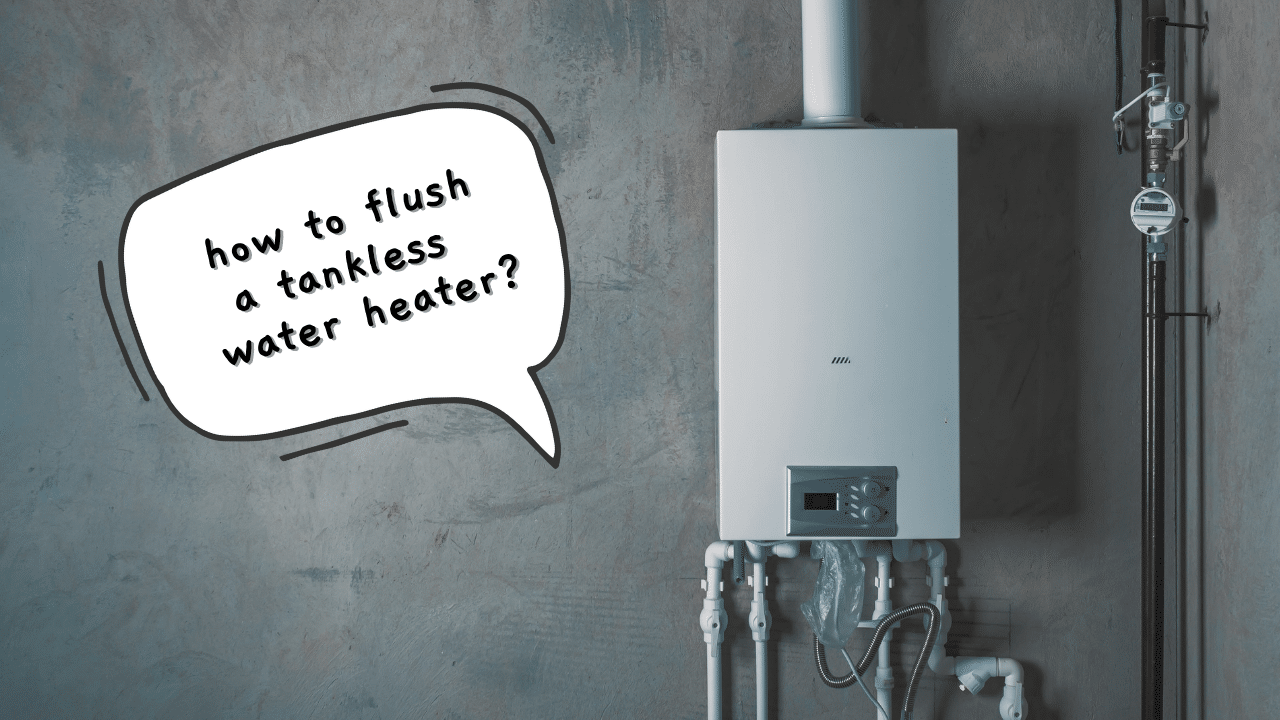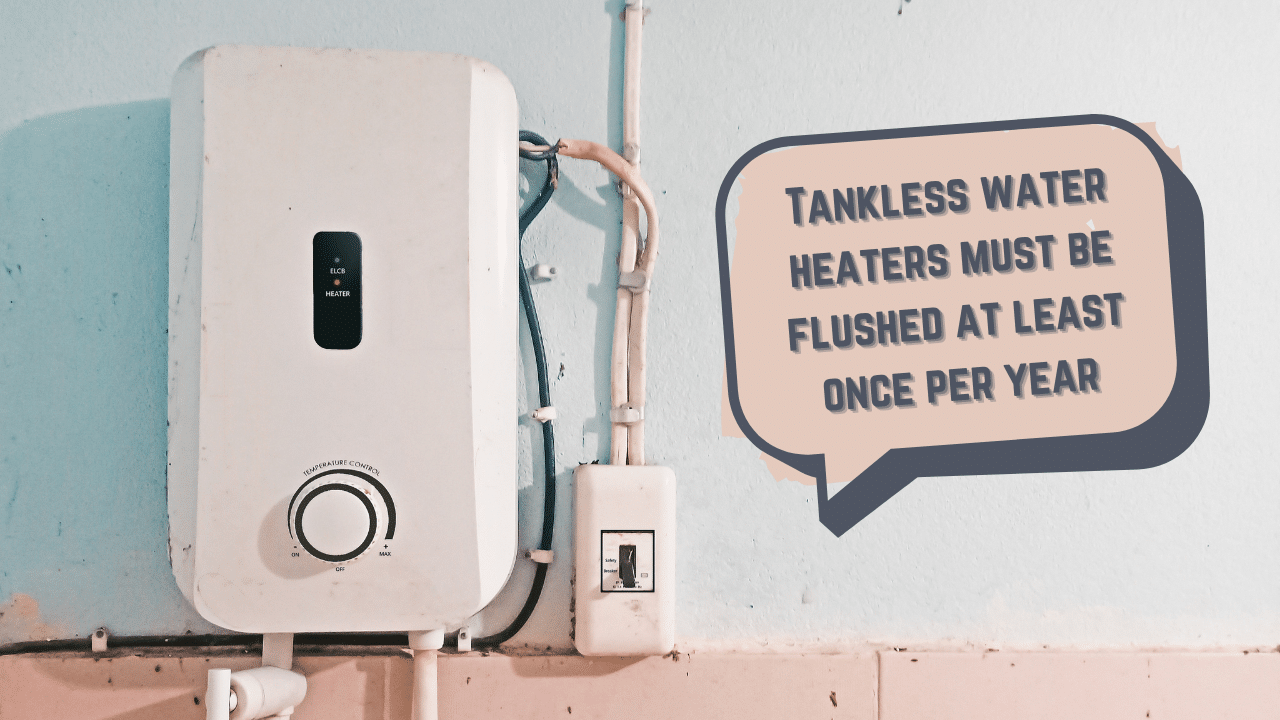The city water supply contains many dissolved minerals such as calcium and magnesium carbonates, bicarbonates, and sulfates. These minerals dissolve in water that percolates through limestone, chalk, and gypsum deposits in the earth. The natural groundwater sources may contain more or less of these minerals, depending on the water source.
The minerals in the water will deposit on the copper pipes of a tankless water heater, making it less efficient at heating the water. At least once per year, vinegar must be flushed through the closed- loop service valves fitted to tankless water heater installations.
Tankless water heaters are designed with shut-off valves on the inlet and outlet side of the system and dedicated flushing inlet and outlet points. Vinegar, a weak acid, will dissolve the scale from the surface of the copper pipes inside the water heater. Let's look at this cleaning procedure in more detail.
Cleaning A Tankless Water Heater Once Per Annum
Whether you are getting your water supply from the city, a well, or rainwater harvesting, the water will contain varying amounts of dissolved minerals. Some water utility companies will even add minerals and chemicals during the water recycling or purification process.
Pure demineralized water is unhealthy for your body and your household devices. Demineralized water is used to top up lead-acid batteries, but it is not good for drinking and cooking. Demineralized water will leech minerals from your body and result in mineral deficiencies that can be life-threatening.
The dissolved minerals in normal water will cause scale buildup in your kettle, water heater, coffee maker, and iron. To remove this scale is very simple and can be done by using white spirit vinegar to clean the surface of the iron, the kettle, or the coffee maker. To clean the copper pipes, valves, and heating element inside a tankless water heater is equally simple.
Manufacturers of tankless water heaters recommend that the system be flushed at least once per year and, even more often, depending on the hardness of your water supply. You can have your water tested to establish the level of hardness.
If you can see scale buildup in your kettle or on the surfaces in your shower, and it is difficult to generate soap lather, it is a sign of hard water. You will need a couple of tools and ingredients to do the vinegar flush:

Check that you have a flush kit installed on your tankless water heater installation. The flush kit consists of screw-on connections on the cold-water inlet and hot-water outlet side. If you do not have a flush kit, contact a professional plumber to install it for you.
If you have a gas-heated tankless heater, turn the propane gas off and shut off the cold water inlet and hot water outlet ball valves. On an electrically heated system, you can leave the power on. Open the cold and hot taps on the flush kit mountings to drain all the water out of the system. (Related: How to Drain a Water Heater?) Remove the stainless steel pre-filter from the cold water side and clean it out.
Replace the pre-filter and pour three gallons of vinegar into the five-gallon bucket. Place the sump pump outlet to one section of the garden hose and connect the other end to the cold water inlet side of the flush kit connection. Connect the other hose to the hot water outlet side of the flush kit and place the other end of the hose back in the five-gallon bucket containing the vinegar.
You can now plug the sump pump into an electrical outlet and start the pump running. The vinegar solution will circulate through the pre-filter, tankless boiler, and back into the bucket. Let the vinegar to circulate through the system for a minimum of sixty to ninety minutes before switching off the pump.
Once this step is complete, close the valves of the cold and hot flush connections and remove the hose pipes. Check the pre-filter once more to ensure that it is completely clean. Turn on the main cold water inlet and hot water outlet valves and open up the gas or switch on the heating element.
Let the system run for five minutes to flush out any vinegar that may still be in the system. All the built upscale will be removed from the water heater, and you might notice that the water heater works better. The layer of scale acts like a heat insulator making the transfer of energy to the waterless efficient.
Thoroughly rinse your tools and the hosepipe connections with fresh water to prevent them from corrosion caused by the vinegar. You can use the vinegar to clean the surface rust off your tools before flushing it clean with fresh water.
What Happens if We Forget to Flush the Tankless Water Heater?
Forgetting to flush out your tankless water heater at least once per year will result in a buildup of scale inside the copper pipes of the system. The built-up calcium carbonate deposits will act like an insulator preventing the heat transfer from the gas flame or electrical element to the water.
The water heater will work less efficiently, and continued scale buildup will eventually cause blockage and severe system damage. The hot water flow will fluctuate and may cause overheating of the system.
A DIY flush will cost you the price of a sump pump for the first year plus the 5 gallons of mineral vinegar to flush the system; after that, only the cost of the 5 gallons of vinegar each year. A professional service would charge you at least $150 per annum.
Conclusion

In order to maintain optimal efficiency, tankless water heaters must be flushed using vinegar at least once per year. If the water in your area has a high dissolved mineral content, you may be required to perform the vinegar flush more often.
Doing the flushing procedure is simple and ideally suited to DIY. Failing to perform the flushing procedure at least once per year may lead to a waste of energy, poor hot water flow, and ultimately a blockage and premature failure of your tankless water heater. If properly maintained, these systems should last twenty to twenty-five years.
